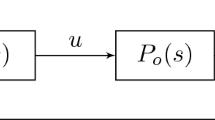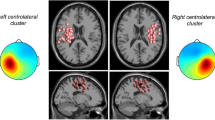Abstract
Background
Aging and pathology result in changes in the dynamics of several physiological subsystems. Often, these changes are concurrent, altering the dynamics between subsystems. Cardiac and gait rhythms are one example in which patterns change during physical activity.
Aims
The purpose of this research is to simultaneously monitor changes in cardiac and gait rhythms when participants complete various treadmill walking tasks—normal speed, fast speed, and while synchronizing steps with a blinking metronome.
Methods
The cardiac and gait rhythms of younger and older healthy adults were examined in this study during treadmill walking tasks. Pre-test and post-test walking at a preferred walking speed were compared to fast walking and walking with a gait synchronization test. Cardiac and gait rhythms were observed to calculate the mean, standard deviation, coefficient of variation, detrended fluctuation analysis scaling exponent alpha (DFA α), and sample entropy from each 15-min trial. Separate MANOVAs were used to examine the two experimental conditions for cardiac and gait rhythm variability.
Results
During the gait synchronization experiment, main effects for phase were exhibited for all gait variables, but none were shown during the fast walking task. Meanwhile, the cardiac rhythms demonstrated decreased mean and increased DFA α only during the synchronization condition.
Discussion
Participants, regardless of age, exhibited similar patterns of change in their cardiac and locomotor rhythms during the treadmill walking tasks. Cardiac rhythms were only altered during the gait synchronization task, suggesting it may be possible to simultaneously influence the variability and structure of cardiac and gait rhythms.

Adapted from Rhea et al. [5]
Similar content being viewed by others
References
Zhang J (2007) Effect of age and sex on heart rate variability in healthy subjects. J Manip Physiol Ther 30:374–379
Jordan K, Challis JH, Cusumano JP et al (2009) Stability and the time-dependent structure of gait variability in walking and running. Hum Mov Sci 28:113–128
Routledge FS, Campbell TS, McFetridge-Durdle JA et al (2010) Improvements in heart rate variability with exercise therapy. Can J Cardiol 26:303–312
Hausdorff JM, Rios DA, Edelberg HK (2001) Gait variability and fall risk in community-living older adults: a 1-year prospective study. Arch Phys Med Rehabil 82:1050–1056. https://doi.org/10.1053/apmr.2001.24893
Rhea CK, Kiefer AW, Wittstein MW et al (2014) Fractal gait patterns are retained after entrainment to a fractal stimulus. PLoS One 9:e106755. https://doi.org/10.1371/journal.pone.0106755
Krishnan MMR, Sree SV, Ghista DN et al (2012) Automated diagnosis of cardiac health using recurrence quantification analysis. J Mech Med Biol 12
Riva F, Toebes MJP, Pijnappels M et al (2013) Estimating fall risk with inertial sensors using gait stability measures that do not require step detection. Gait Posture 38:170–174
Wayne PM, Manor B, Novak V et al (2013) A systems biology approach to studying Tai Chi, physiological complexity and healthy aging: design and rationale of a pragmatic randomized controlled trial. Contemp Clin Trials 34:21–34. https://doi.org/10.1016/j.cct.2012.09.006
Schulz S, Adochiei F, Edu I et al (2013) Cardiovascular and cardiorespiratory coupling analyses: a review. Philos Trans A Math Phys Eng Sci 371:20120191. https://doi.org/10.1098/rsta.2012.0191
Godin PJ, Buchman TG (1996) Uncoupling of biological oscillators: a complementary hypothesis concerning the pathogenesis of multiple organ dysfunction syndrome. Crit Care Med 24:1107–1116
Seely AJE, Christou NV (2000) Multiple organ dysfunction syndrome: exploring the paradigm of complex nonlinear systems. Crit Care Med 28:2193–2200
Novak V, Hu K, Vyas M et al (2007) Cardiolocomotor coupling in young and elderly people. J Gerontol A Biol Sci Med Sci 62:86–92
Lipsitz LA (2002) Dynamics of stability: the physiologic basis of functional health and frailty. J Gerontol A Biol Sci Med Sci 57:B115-25
Manor BD, Lipsitz LA (2013) Physiologic complexity and aging: implications for physical function and rehabilitation. Prog Neuropsychopharmacol Biol Psychiatry 45:287–293. https://doi.org/10.1016/j.pnpbp.2012.08.020
Rhea CK, Kiefer AW, D’Andrea SE et al (2014) Entrainment to a real time fractal visual stimulus modulates fractal gait dynamics. Hum Mov Sci 36:20–34
Hove MJ, Suzuki K, Uchitomi H et al (2012) Interactive rhythmic auditory stimulation reinstates natural 1/f timing in gait of parkinson’s patients. PLoS One 7:e32600. https://doi.org/10.1371/journal.pone.0032600
Marmelat V, Torre K, Beek PJ et al (2014) Persistent fluctuations in stride intervals under fractal auditory stimulation. PLoS One 9:e91949
Uchitomi H, Ota L, Ogawa K et al (2013) Interactive rhythmic cue facilitates gait relearning in patients with Parkinson’s disease. PLoS One 8:e72176. https://doi.org/10.1371/journal.pone.0072176
Kaipust JP, McGrath D, Mukherjee M et al (2013) Gait variability is altered in older adults when listening to auditory stimuli with differing temporal structures. Ann Biomed Eng 41:1595–1603. https://doi.org/10.1007/s10439-012-0654-9
Hausdorff JM, Purdon PL, Peng C-K et al (1996) Fractal dynamics of human gait: stability of long-range correlations in stride interval fluctuations. J Appl Physiol 80:1448–1457
Hausdorff JM (2007) Gait dynamics, fractals and falls: finding meaning in the stride-to-stride fluctuations of human walking. Hum Mov Sci 26:555–589. https://doi.org/10.1016/j.humov.2007.05.003
Stergiou N, Decker LM (2011) Human movement variability, nonlinear dynamics, and pathology: is there a connection? Hum Mov Sci 30:869–888. https://doi.org/10.1016/j.humov.2011.06.002
Rhea CK, Kiefer AW (2014) Patterned variability in gait behavior: how can it be measured and what does it mean. In: Li L, Georgia SU, Holmes M (eds) Gait biometrics basic patterns, role neurol. Disord. Eff. Phys. Act. Nova Science, Hauppauge, pp 17–44
Vaillancourt D, Newell KM (2002) Changing complexity in human behavior and physiology through aging and disease. Neurobiol Aging 23:1–11
Jordan K, Challis JH, Newell KM (2007) Walking speed influences on gait cycle variability. Gait Posture 26:128–134
Iyengar N, Peng C-KK, Morin R et al (1996) Age-related alterations in the fractal scaling of cardiac interbeat interval dynamics. Am J Physiol 271:R1078–R1084
Berntson GG, Bigger JT Jr, Eckberg DL et al (1997) Heart rate variability: origins, methods, and interpretive caveats. Psychophysiology 34:623–648
Pikkujämsä SM, Mäkikallio TH, Sourander LB et al (1999) Cardiac interbeat interval dynamics from childhood to senescence comparison of conventional and new measures based on fractals and chaos theory. Circulation 100:393–399
American College of Sports Medicine, Thompson WR, Gordon NF, Pescatello LS (2010) ACSM’s guidelines for exercise testing and prescription, 8th edn. Philadelphia: Wolters Kluwer/Lippincott Williams & Wilkins
Brach JS, Studenski SA, Perera S et al (2008) Stance time and step width variability have unique contributing impairments in older persons. Gait Posture 27:431–439. https://doi.org/10.1016/j.gaitpost.2007.05.016
Brach JS, Berlin JE, VanSwearingen JM et al (2005) Too much or too little step width variability is associated with a fall history in older persons who walk at or near normal gait speed. J Neuroeng Rehabil 2:21. https://doi.org/10.1186/1743-0003-2-21
Gabell A, Nayak US (1984) The effect of age on variability in gait. J Gerontol 39:662–666
Hargittai S (2005) Savitzky-Golay least-squares polynomial filters in ECG signal processing. Comput Cardiol 2005:763–766
Zeni JA Jr, Richards JG, Higginson JS (2008) Two simple methods for determining gait events during treadmill and overground walking using kinematic data. Gait Posture 27:710–714
Peng C-K, Buldyrev SV, Havlin S et al (1994) Mosaic organization of DNA nucleotides. Phys Rev E 49:1685
Richman JS, Moorman JR (2000) Physiological time-series analysis using approximate entropy and sample entropy. Am J Physiol Hear Circ Physiol 278:H2039-49
Jordan K, Challis JH, Newell KM (2007) Speed influences on the scaling behavior of gait cycle fluctuations during treadmill running. Hum Mov Sci 26:87–102. https://doi.org/10.1016/j.humov.2006.10.001
Lake DE, Richman JS, Griffin MP et al (2002) Sample entropy analysis of neonatal heart rate variability. Am J Physiol Integr Comp Physiol 283:R789–R797
Porta A, Castiglioni P, Bari V et al (2013) K-nearest-neighbor conditional entropy approach for the assessment of the short-term complexity of cardiovascular control. Physiol Meas 34:17–33. https://doi.org/10.1088/0967-3334/34/1/17
Yentes JM, Hunt N, Schmid KK et al (2013) The appropriate use of approximate entropy and sample entropy with short data sets. Ann Biomed Eng 41:349–365
Eduardo Virgilio Silva L, Otavio Murta L (2012) Evaluation of physiologic complexity in time series using generalized sample entropy and surrogate data analysis. Chaos 22:43105. https://doi.org/10.1063/1.4758815
Goldberger AL, Peng C-K, Lipsitz LA (2002) What is physiologic complexity and how does it change with aging and disease? Neurobiol Aging 23:23–26
Lipsitz LA, Goldberger AL (1992) Loss of complexity and aging. J Am Med Assoc 267:1806–1809
Kirby RL, Nugent ST, Marlow RW et al (1989) Coupling of cardiac and locomotor rhythms. J Appl Physiol 66:323–329
Niizeki K, Kawahara K, Miyamoto Y (1993) Interaction among cardiac, respiratory, and locomotor rhythms during cardiolocomotor synchronization. J Appl Physiol 75:1815–1821
Censi F, Calcagnini G, Cerutti S (2002) Coupling patterns between spontaneous rhythms and respiration in cardiovascular variability signals. Comput Methods Programs Biomed 68:37–47
Author information
Authors and Affiliations
Corresponding author
Ethics declarations
Conflict of interest
On behalf of all authors, the corresponding author states that there is no conflict of interest.
Statement of human and animal rights
All procedures were approved by the University of North Carolina Greensboro Institutional Review Board.
Informed consent
All participants provided informed consent prior to their participation.
Rights and permissions
About this article
Cite this article
Wittstein, M.W., Starobin, J.M., Schmitz, R.J. et al. Cardiac and gait rhythms in healthy younger and older adults during treadmill walking tasks. Aging Clin Exp Res 31, 367–375 (2019). https://doi.org/10.1007/s40520-018-0962-5
Received:
Accepted:
Published:
Issue Date:
DOI: https://doi.org/10.1007/s40520-018-0962-5




